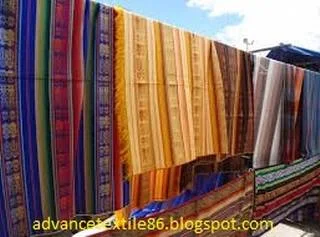Introduction
As
a domain of technology, textiles have the potential to never end. Food,
clothing, and shelter are the basic needs of mankind, as long as one survives
there is a need for clothing. Therefore, textile and textile engineers will
have their needs as long as people exist. Along with clothing, here comes
aesthetics as an integral quality. It is also essential for extraterrestrial
purposes and features everything from droppers to upholstery materials,
appearance, color, grace, and gloss values. This is the region where textile
chemistry comes into the picture. Textile materials, whether in the form of
fibers, yarns, or fabrics, need to be properly processed to make them suitable
for use, and this processing is what textile chemists do.
What is textile chemistry?
The
chemistry which is used in the textile industry is called textile chemistry. Textile
chemistry is a very specialized field that is used for clothing, furniture,
tire yarn, airbags, and much more as it applies the principles of chemistry in
textile production. Textile chemists can change to create new products to meet
the needs of specific markets or to market existing products more generally.
Textile chemistry is divided into three special regions: dyeing and finishing
chemistry, fiber, and polymer chemistry, and a new field that intersects with
materials science and involves blending different textile materials. In the clothing industry, chemists work on research and development, process
development, process modification, technical services, environmental testing,
and dyeing and finishing.
The
study of textile chemistry begins with knowledge of both natural and synthetic
fibers. Since polymeric synthetic fibers are an important part of today's
textile business, there are many chemists in the field who are trained in
polymer chemistry. Textile chemistry requires an understanding of both organic
chemistry and surface chemistry for dyeing and finishing aspects.
The
interaction between textile chemistry and materials science is also increasing
day by day. The application of surface chemistry principles in processes such
as dyeing and finishing are used in textile chemistry involves. It involves
organic chemistry in the synthesis and combination of products used in these
processes.
Objectives of textile chemistry
Specialization in the field of textile chemistry can provide opportunities for dynamic and creative applications of chemistry. A textile chemist is concerned with the knowledge of the organic structures of both fibers and the chemicals used to modify them to specific chemical, physical and sensory properties. Theoretical and practical combinations have led to the development of thousands of textile chemicals required for the production of finished articles.
Application of textile chemistry in the textile industry
The application of textile chemistry in the textile industry is versatile. Most of the textile materials of their
natural color are beige colorless silk, and different colored fur according to the
color, which is yellow cotton. In order to improve the light, it became
important to change the elliptical cross-section of cotton to round, to
brighten it, and to change its color by bleaching. Synthetic fibers were made
to deal with the problems of natural fibers which are dissolved by rolling the
solution and the polymer is dissolved and then the spinner is dissolved in the
spinning and then extracted from the spinnerets. Nowadays textiles are not just
for garments, as they have a wide market share known as technical textiles.
Various finishes are applied in textiles such as resin finish, anti-microbial
finish in surgical gowns, anti-mildew, and anti-microbial for kitchen aprons, UV
treatment for screens, chemically inert filters, etc. to improve crease
recovery.










0 Comments